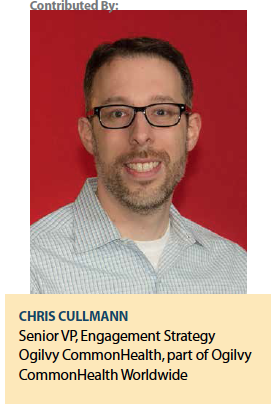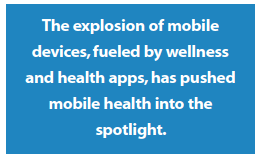The Internet has forever changed the way we look at information. Unlike any other generation before, information, text, music,  images, video, are accessible to us at no or little cost at a speed incomparable to any previous technology. Our perspective on access then hit a paradigm shift: mobile. With the entrance of high-speed data networks, this tap to information is now untethered and available almost everywhere. Mobile has changed how we look at context.
images, video, are accessible to us at no or little cost at a speed incomparable to any previous technology. Our perspective on access then hit a paradigm shift: mobile. With the entrance of high-speed data networks, this tap to information is now untethered and available almost everywhere. Mobile has changed how we look at context.
Context Makes Everything Relevant
Context is important. Context is what makes communication valuable to us and relevant. Context is why many of us are so attached to our phones and devices. Context is having a camera always with you to take the snapshot in the moment. Context is getting a text message from your loved one when you are out and about. Context is knowing the meeting room changed floors before you’ve gotten off of the elevator. Most of all, context is about having the right information in the right form and at the right moment.
For healthcare brands, this context is critical. It is also one of the more difficult things to “get right." Why is it so hard? Because being in the right place for the right person with the right information is hard. It requires a nimble and adaptive solution. But most of all, it requires that we focus on the patient.
Designing for the patient is a challenge for many brands. The practice, usually referred to outside of healthcare as user-centric design, asks that designers, developers and strategist really consider what role an app or any digital tool will play for the user: Is this a one-off engagement for the user? Will the user touch this app every day? Multiple times in a day? And under what circumstance? Will the brand itself play any part in this engagement, or are we standing behind the patient waiting anxiously to be called upon? To do our jobs in bringing a truly meaningful product to market, we need to ask these questions and be comfortable with the answers — even when we don’t like them.
The popularity in mobile apps is very much tied to their utility and the ease of engagement. For many smartphone users, checking and engaging their favorite apps is habitual. The pattern of behavior is rewarding and satiates a need with some type of reward. It’s this type of gamified engagement that healthcare brands need to leverage to succeed with mobile health initiatives.
Creating New Patterns of Behavior
The impact of this behavior change is not new. The explosion of mobile devices, fueled by wellness and health apps, has pushed mobile health into the spotlight. For many pharmaceutical brands, this new public enthusiasm has created a very real urgency to exercise their expertise and fight for share of voice in a crowded marketplace. The opportunity to lead in this space is very much about behavior change. This is something that wellness brands in the wearable space picked up on with great success.
 Brands like Fitbit and Jawbone created a new pattern of behavior that rewards each milestone met with an achievement: a buzz, small fanfare, or even celebratory dashboard alert on a smartphone. Meeting pre-determined goals gives a sense of achievement to users. “I better walk those few blocks…I want to get my steps in" is a refrain now heard many places as users create exercise opportunities to get that small endorphin rush from making their daily achievement.
Brands like Fitbit and Jawbone created a new pattern of behavior that rewards each milestone met with an achievement: a buzz, small fanfare, or even celebratory dashboard alert on a smartphone. Meeting pre-determined goals gives a sense of achievement to users. “I better walk those few blocks…I want to get my steps in" is a refrain now heard many places as users create exercise opportunities to get that small endorphin rush from making their daily achievement.
The challenge for healthcare brands exceeds creating “compelling" diaries and counters. The broader challenge is how to turn these behaviors, even at scale, into a meaningful value. Any pharma or healthcare brand can enter the mobile space through a partnership or by developing a “me too" application for use in the wellness space. The market needs a change that will be scalable and truly help patient populations. Physicians can now work on managing patient expectations and setting goals. This ability is enabled by context — and context relative to the broader population participating in the same exercise or data collection.
mHealth Closes the Gap
Wearables are a bit of a red-herring for pharmaceutical brands. Although they are a catalyst for innovation and a change in patient monitoring behavior, they lack some of the specificity and consistency required for a broader health change. This is where mHealth can close the gap.
Mobile devices, connected homes, and wearables put medical quantitative data at our fingertips when there is an issue and with great accuracy. Companies like CellScope and Qualcomm allow for the tools of a hospital to be with us all of the time regardless of setting.
By using specific applications and the behavior changes, physicians finally have a chance to take advantage of context (heart rate, time of day, blood sugar levels, etc) to help improve health and capture data at the point of care and greatest impact.
Context is the new mobile. (PV)
Ogilvy CommonHealth Worldwide — the health behavior experts of Ogilvy & Mather — is committed to creativity and effectiveness in healthcare communications, everywhere.
For more information, visit ochww.com.










